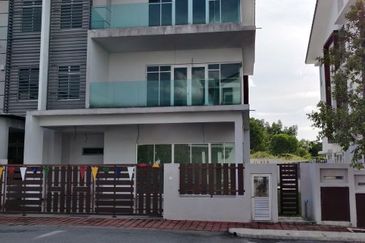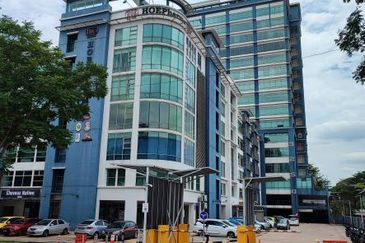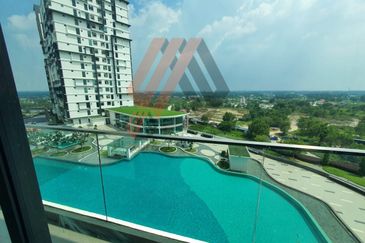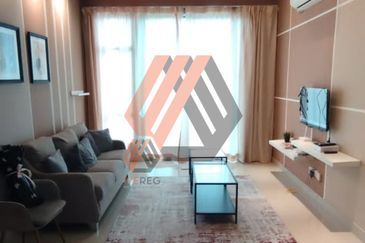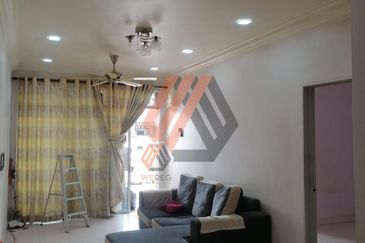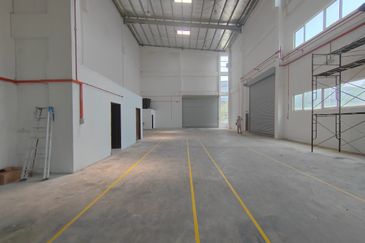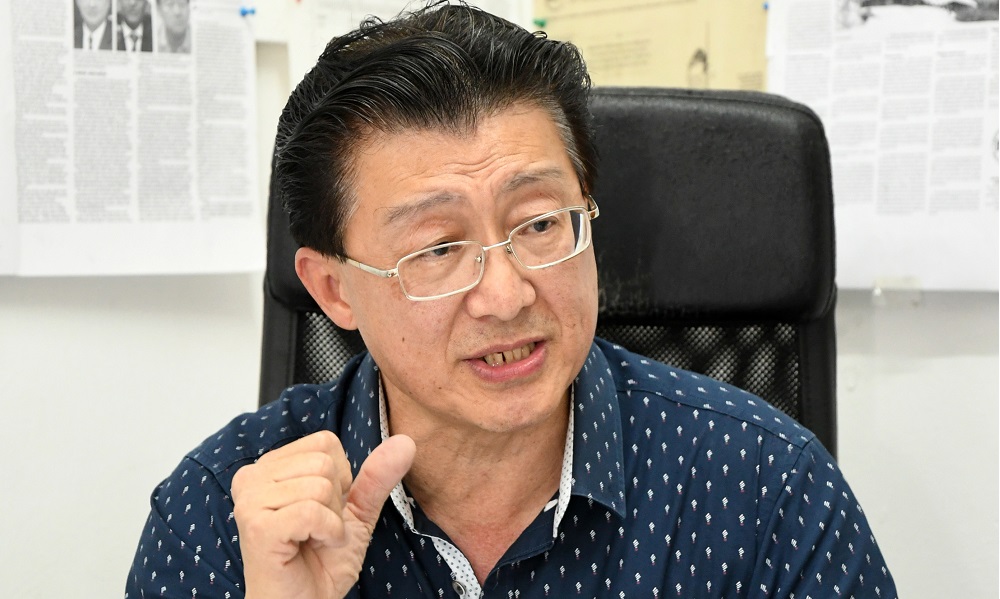
- Talks of the government wanting to promote second-generational loans or dual-generation housing loans are rife, but what is the cost to the rakyat?
Doubtless, Malaysia is currently facing a housing crisis where the majority of the rakyat cannot afford to buy their first homes. As early as 2012, the National House Buyers Association (HBA) has been warning that housing prices were beginning to escalate out of control, and unless immediate remedial measures were taken, a “homeless generation” will emerge, where an entire generation or even generations of the rakyat, from the lower- to middle- income segments and our fresh graduates will not be able to buy their first homes.
To quote from Bank Negara Malaysia (BNM) 2016 Annual Report: “Since 2012, the increase in house prices in Malaysia has outstripped the rise in income levels. Consequently, prevailing median house prices are beyond the reach of most Malaysians”. (https://www.bnm.gov.my/documents/20124/6443040/ar2016_en_box5.pdf – page 90)
The situation has not improved in 2022. Based on BNM Financial Stability Review Report Second Half 2021, the median property price in Malaysia is 4.7 times the median income, which can be classified as “seriously unaffordable” by international standards. (https://www.bnm.gov.my/documents/20124/6459002/fsr21h2_en_book.pdf – page 27)
Fixing the current housing crisis is not going to be easy or fast as the crisis did not just happen overnight. Various parties have come up with their own formulae or suggestions on how to enable the rakyat to buy their dream homes. One of these, proffered by financial institutions and developers, is the intergenerational loan, but how viable is this proposal?
What are the features?
There are various permutations on what intergenerational loans, also known as second-generation or dual-generation loans, mean, but in a nutshell, these housing loans entail one or more of the following features:
i A housing loan with a tenure of 40 years or more, which will exceed the expected retirement age of the borrower
ii Option to make a bullet repayment on the outstanding loan amount using EPF (Employees' Provident Fund) savings upon reaching retirement age
iii If the loan remains outstanding upon the borrower’s retirement, the borrower’s children can continue paying for the loan until it is fully settled
Whilst the Government may have good intentions for every rakyat to own a home and for families to live together, HBA believes intergenerational loans will not help solve the current housing crisis but will only exacerbate the situation in the mid to long term. HBA believes the government may have been ill-advised by parties with vested interest, namely financial institutions and housing developers, on the merits of these loans.
No chance to retire comfortably
The main reason most people buy houses is so that when they retire, they will have a roof over their heads and not be homeless. Otherwise, why bother going through the hassle when you can just rent a house?
Hence, it is important that buyers match the liabilities of owning houses against their expected income streams. A mismatch can result in house buyers being unable to service their mortgage obligations and risk foreclosures by the financial institutions, which can result in property bubbles and even global financial crisis, as evident from the subprime mortgage crisis in the US during 2007-2010, which resulted in the worst economic crisis since the Great Depression of the 1930s.
By taking an intergenerational loan, which will extend to at least age 70, assuming the borrower was just 30 years old when the loan was first taken, the house buyer may not be in a position to retire or stop work when he or she reaches 60. He or she must continue working to service the outstanding loan obligations in the event the second generation is unable or unwilling to serve it. What if the house buyer is no longer in physically fit to enable him or her to work? Under this scenario, the house buyer will face foreclosure even after paying the bank loan for more than 30 years.
EPF savings meant for old age living expenses
As mentioned above, some intergenerational loans might have the feature of a bullet repayment using EPF savings upon the borrower’s retirement age. However, in reality, the majority of Malaysians do not have enough money in their EPF to retire comfortably, and hence, will not be able to use their EPF funds to repay the balance of the intergenerational loans upon retirement.
It has been reported EPF estimates 73% of its members will not be able to meet the already-low basic savings threshold of RM240,000 at age 55 to retire and some 46% of its contributors below 55 have less than RM10,000 in their EPF accounts. (https://www.theedgemarkets.com/article/special-report-fixing-low-retirement-savings-epf-members)
The primary reason for EPF is so that contributors will have some financial safety net upon reaching retirement age. Even for those who may have excess funds in their EPF accounts, exhausting the EPF savings to fully repay the intergenerational loan is not a good move as it would mean the borrower would not die homeless, but possibly of starvation.
Higher total interests incurred
It cannot be denied the monthly instalments of these intergenerational loans are lower than conventional loans, but because the former’s tenures are significantly longer, the house buyer also ends up paying significantly much more in interest expense over the entire tenure of the loan. In some instances, the interest portion can even be higher than the principal loan amount.
HBA recommends that house buyers should ideally take loan tenures of 20 years, and if necessary, stretch it up to 30 years, but never beyond that. If you cannot afford it over 30 years, accept reality and buy something more affordable.
To illustrate, based on a housing loan of RM300,000 and assuming an effective interest rate of 3.5% p.a. over the entire tenure, the monthly loan repayments of a 20-year to a 50-year housing loan is as follows:
Table 1
|
Type of housing loan |
Traditional loan |
Intergenerational loan |
||
|
Loan tenure (years) |
20 |
30 |
40 |
50 |
|
Monthly repayment |
RM1,740 |
RM1,347 |
RM1,162 |
RM1,060 |
|
Total repayment |
RM417,600 |
RM484,920 |
RM557,760 |
RM636,000 |
|
Principal loan amount |
RM300,000 |
RM300,000 |
RM300,000 |
RM300,000 |
|
Interest portion |
RM117,600 |
RM184,920 |
RM257,760 |
RM336,000 |
|
Percentage of interest paid over principal loan amount |
39.2% |
61.6% |
85.9% |
112.0% |
|
Loan outstanding at end of year 30 |
- |
- |
RM117,527 |
RM182,702 |
|
Percentage of loan outstanding at end of year 30 |
- |
- |
39.2% |
60.9% |
|
Percentage of loan tenure remaining at end of year 30 |
- |
- |
25.0% |
40.0% |
As illustrated above, no doubt the monthly repayments for intergenerational loans are lower than traditional loans (RM578 lower comparing 20-year and 40-year loan tenures) but in reality, it means the borrower saves RM578 monthly for the first 20 years but ends up paying RM1,162 extra monthly for the next 20-years.
By taking an intergenerational loan and stretching the repayment tenure longer, the interest portion may eventually be higher than the principal amount of the loan. Hence, it is more economically beneficial to the house buyer to take shorter loan tenures and pay off the housing loan faster. Better a pain while the house buyer is still gainfully employed.
Loan outstanding not proportionate to tenure outstanding
The current practice is the monthly loan instalment that a borrower pays to the bank is split between paying the interest and reducing the principal loan amount. As the principal loan outstanding is high at the start of the loan, a higher amount of the monthly loan instalment is used to service the interest. Hence, the principal loan outstanding does not correspond directly to the remaining loan tenure.
Referring to Table 2 below, if the borrower takes an intergenerational loan of say 40 years and have paid 30 years or about 75% of the tenure, the borrower may expect the loan outstanding to be 25% of RM300,000 or RM75,000. However, in reality, the loan amount is RM117,527 or 39.2% of the original loan amount of RM300,000. If the borrower had taken an intergenerational loan tenure of 50 years, the borrower would have paid 60% of the loan tenure, but the loan outstanding is RM182,702 or 60.9% of the original loan amount.
The borrower would have underestimated the actual loan amount and could be out of funds in trying to settle the outstanding sum and could be forced to either continue working or to get his children to take over the remaining loan obligations or risk the banks foreclosing the property despite having diligently serviced the loan obligations for 30 years.
Table 2
|
Type of housing loan |
Traditional loan |
Intergenerational loan |
||
|
Loan tenure (years) |
20 |
30 |
40 |
50 |
|
Loan outstanding at end of year 30 |
- |
- |
RM117,527 |
RM182,702 |
|
Percentage of loan outstanding at end of |
- |
- |
39.2% |
60.9% |
|
Percentage of loan tenure remaining at end of year 30 |
- |
- |
25.0% |
40.0% |
|
Theoretical loan outstanding based on percentage of remaining loan tenure |
|
|
RM75,000 |
RM120,000 |
Children born into financial slavery
In the olden days when slavery was legalised, children of slaves were born into slavery. Slaves had no rights and children of slaves also had no rights, and this cycle perpetuated over itself. By taking an intergenerational loan, these house buyers would have inadvertently committed their children to a financial commitment even before their children are old enough to enter into any sort of legal contract. Parents should only bequeath inheritance to their children after their own passing and never leave their children with financial debt commitments. What if there were several children (born and unborn at the time of the loan)? What about division of property (civil or syariah) in the event of the demise of the principal borrower? Which one of the children should “inherit” the burden?
Hence, when their children are just entering the work force, these second generations have a financial commitment and a burden to serve that they did not enter into and is unable to break without jeopardising their parents, who could be sued by the financial institutions for non-performance or risk the family home being foreclosed. Is it fair to these second generations to face such financial commitments? What if their children had to work in other states and take care of their own families? Would they be able to service their own financial obligations and this intergenerational loan at the same time?
Only advantageous to short-term buyers and speculators
So, given all the demerits surrounding intergenerational loan, who then would apply for such loans? In HBA’s opinion, they would only attract buyers and investors who wish to live in the said properties on a short-term basis (say three to five years) and want to hedge against any potential increase in rental rates (or sudden eviction by the landlords) or property speculators who wish to make a quick buck and lower their cost. Table 3 illustrates such a scenario.
Table 3
|
Type of housing loan |
Traditional loan |
Intergenerational loan |
||
|
Loan tenure (years) |
20 |
30 |
40 |
50 |
|
Monthly repayment |
RM1,740 |
RM1,347 |
RM1,162 |
RM1,060 |
|
Annual repayment |
RM20,880 |
RM16,164 |
RM13,944 |
RM12,720 |
|
Value of property, assuming 100% financing |
RM300,000 |
RM300,000 |
RM300,000 |
RM300,000 |
|
Equivalent rental yield |
6.96% |
5.39% |
4.65% |
4.24% |
Using the same information in Table 1, short-term house owners cum investors or property speculators are better off if they take intergenerational loan tenures of 40 years or longer and only stay or hold for about three to five years before selling off the said property and moving on to another property.
This is because the equivalent rental yield paid by such house owners, investors or speculators may even be lower compared to renting outright on conventional loans. Besides, such short-term owners are able to freely renovate their properties as they wish – something they cannot do on rented properties. However, such short-term house buyers are subject to the risk of property price fluctuations.
Banks and developers chief beneficiaries
The chief beneficiaries of intergenerational loans are financial institutions and housing developers. Financial Institutions will make a higher profit as shown from Table 4 below and housing developers will be able to sell properties at higher values because financial institution are willing to finance such properties. This will only increase the unaffordability of the younger generations to own homes.
Table 4
|
Type of housing loan |
Traditional loan |
Intergenerational loan |
||
|
Loan tenures (years) |
20 |
30 |
40 |
50 |
|
Monthly repayment |
RM1,740 |
RM1,347 |
RM1,162 |
RM1,060 |
|
Total repayment |
RM417,600 |
RM484,920 |
RM557,760 |
RM636,000 |
|
Value of property and assuming 100% financing |
RM300,000 |
RM300,000 |
RM300,000 |
RM300,000 |
|
Interest portion |
RM117,600 |
RM184,920 |
RM257,760 |
RM336,000 |
|
Average annual interest income to financial institution |
RM5,880 |
RM6,164 |
RM6,444 |
RM6,720 |
Government must give incentives for affordable housing
The government must continue with its aspiration for every rakyat to have a roof over their heads but intergenerational loan is not the answer. The government should take cognisance that intergenerational loan could be abused by property speculators as a means of cheap financing. It should disallow financial institutions from extending such loans, which will only worsen the housing crisis in the mid to long term.
The government should offer incentives for housing developers to build affordable housing for the masses, especially the lower and middle income. It must also put in place measures to stem excessive property speculation fuelled by easy credit such as imposing higher stamp duties for transfer of properties and higher real property gains tax for owners of multiple properties.
This article is written by Datuk Chang Kim Loong, Honorary Sec-Gen of the National House Buyers Association (HBA), which is a voluntary non-government and not-for-profit organisation manned wholly by volunteers.
HBA may be contacted via: www.hba.org.my / email: [email protected]
TOP PICKS BY EDGEPROP

Glory Beach Resort Apartment
Port Dickson, Negeri Sembilan

Pearl Villa Townhouse
Bandar Saujana Putra, Selangor
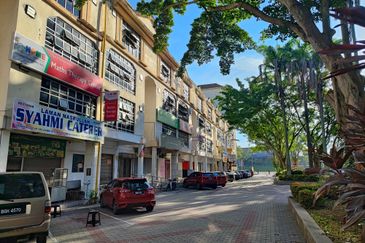
Nilai Square Commercial Center
Nilai, Negeri Sembilan

Twentyfive.7 Lucent Residences
Telok Panglima Garang, Selangor

